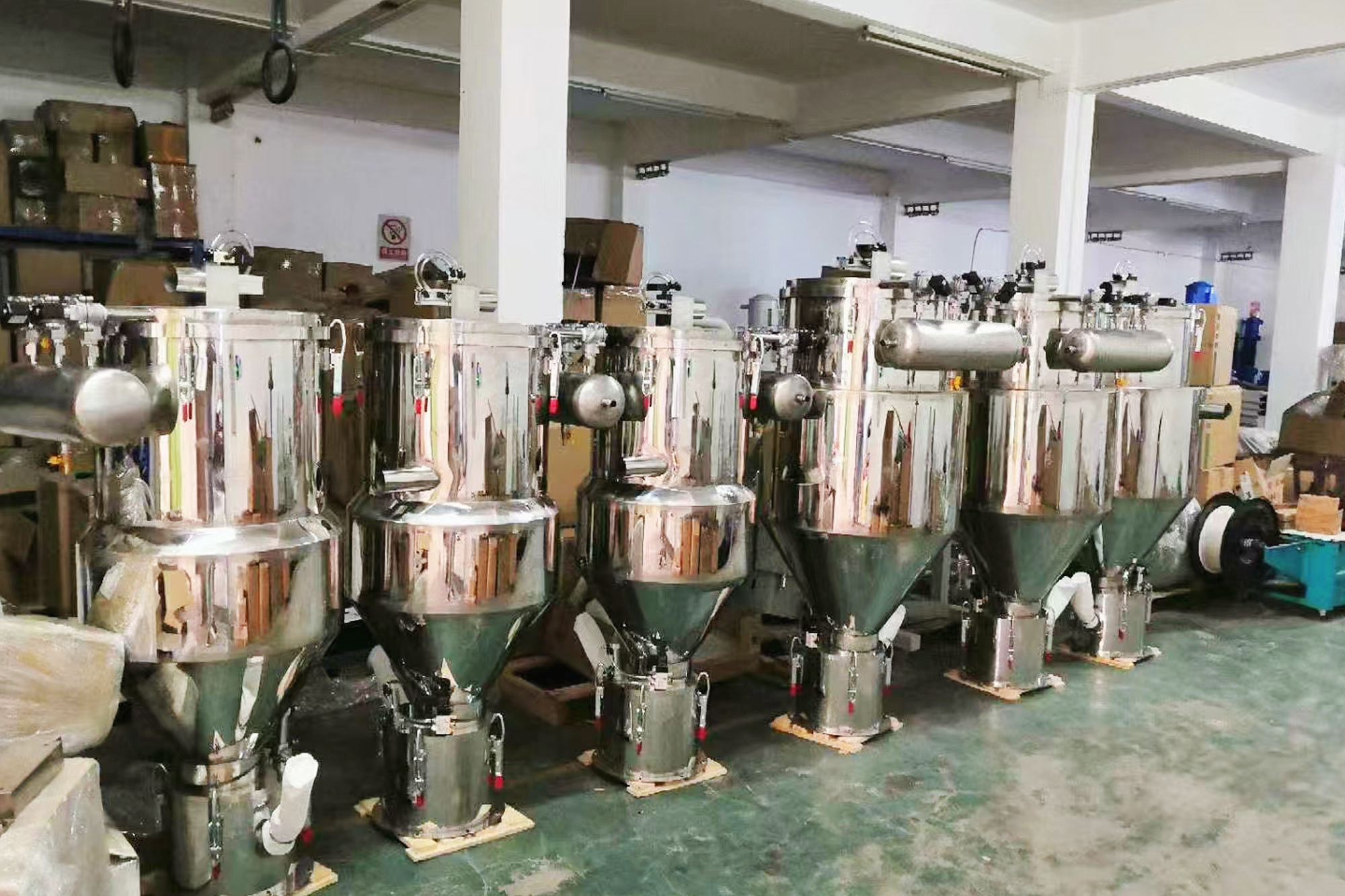 濟南鑫魯泉盛機械設備有限公司
濟南鑫魯泉盛機械設備有限公司
服務熱線:15662735099
聯系地址:山東章丘棗園經濟開發區
倉泵在輸送不同物料時,是否需要保溫取決于物料的物理化學特性、輸送環境及工藝要求。保溫的核心目的是維持物料的穩定狀態,避免因溫度變化導致輸送不暢、設備堵塞或物料性質改變,尤其對于易受溫度影響的物料,保溫措施是保障系統高效運行的關鍵。
Whether the warehouse pump needs insulation when transporting different materials depends on the physical and chemical properties of the materials, the conveying environment, and the process requirements. The core purpose of insulation is to maintain the stable state of materials, avoid poor transportation, equipment blockage, or changes in material properties caused by temperature changes. Especially for materials that are easily affected by temperature, insulation measures are the key to ensuring the efficient operation of the system.
高溫易凝固的熔融態物料必須采取保溫措施,這類物料在溫度降低時會失去流動性,引發管道堵塞風險。如某些工業生產中產生的熔融渣料、高溫粘稠物料,在輸送過程中若溫度降至凝固點以下,會從液態轉為固態,附著在倉泵內壁及輸送管道上,不僅阻礙物料流動,還可能因反復加熱冷卻導致設備磨損。保溫需采用耐高溫材料(如硅酸鋁棉、巖棉)包裹倉泵及相關管道,同時配合伴熱裝置(如電伴熱、蒸汽伴熱),將物料溫度維持在凝固點以上 5-10℃,確保其始終保持可輸送的粘稠度。此類物料的保溫系統需具備溫度監測功能,實時反饋物料溫度,避免因保溫失效導致的生產中斷。
Thermal insulation measures must be taken for molten materials that are prone to solidification at high temperatures. These materials will lose their fluidity when the temperature drops, which can lead to the risk of pipeline blockage. Molten slag and high-temperature viscous materials generated in certain industrial production, if the temperature drops below the solidification point during transportation, will transform from liquid to solid and adhere to the inner wall of the bin pump and the conveying pipeline. This not only hinders the flow of materials, but may also cause equipment wear due to repeated heating and cooling. High temperature resistant materials (such as aluminum silicate wool and rock wool) should be used to wrap the warehouse pump and related pipelines for insulation, and heat tracing devices (such as electric tracing and steam tracing) should be used to maintain the material temperature 5-10 ℃ above the solidification point, ensuring that it always maintains a transportable viscosity. The insulation system for such materials needs to have temperature monitoring function, providing real-time feedback on material temperature to avoid production interruption caused by insulation failure.
吸濕性強且易結塊的粉體物料需要保溫防潮,溫度驟降會使空氣中的水汽凝結在物料表面,引發結塊現象。如某些干燥的化工粉體、食品原料,在低溫環境下輸送時,倉泵內部與外界環境的溫差會導致水汽聚集,使原本分散的粉體顆粒粘連成塊,堵塞卸料口和輸送管道,降低輸送效率。保溫措施需兼顧隔熱與防潮,選用具有防潮層的保溫材料(如夾鋁箔的玻璃棉),減少外界濕氣侵入,同時保持倉泵內部溫度穩定,縮小與環境的溫差。在高濕度地區(如南方梅雨季節),還需配合倉泵內部的除濕裝置,降低空氣中的水分含量,從源頭減少物料結塊的可能性。
Powder materials with strong moisture absorption and easy clumping need to be insulated and moisture-proof. A sudden drop in temperature can cause water vapor in the air to condense on the surface of the material, leading to clumping. When certain dry chemical powders and food raw materials are transported in low-temperature environments, the temperature difference between the interior of the warehouse pump and the external environment can cause water vapor to accumulate, causing the originally dispersed powder particles to stick together into blocks, blocking the discharge port and transportation pipeline, and reducing transportation efficiency. Thermal insulation measures should take into account both insulation and moisture resistance. Insulation materials with a moisture resistant layer (such as glass wool with aluminum foil) should be selected to reduce the intrusion of external moisture, while maintaining stable internal temperature of the warehouse pump and reducing the temperature difference with the environment. In high humidity areas (such as the southern rainy season), it is also necessary to cooperate with the dehumidification device inside the warehouse pump to reduce the moisture content in the air and minimize the possibility of material clumping from the source.
對溫度敏感且易發生化學變化的物料必須嚴格控制溫度,溫度波動可能導致物料性質改變,影響后續生產質量。如某些醫藥中間體、精細化工原料,在溫度過高時可能發生分解、氧化,溫度過低時則可能失去活性或結晶。這類物料的保溫需采用精準控溫的方式,通過恒溫保溫層(如聚氨酯發泡材料)配合溫度調節系統,將倉泵內的溫度波動控制在 ±2℃范圍內。輸送過程中需全程監測物料溫度,一旦超出設定范圍,立即啟動加熱或冷卻輔助裝置,確保物料在輸送前后的性質保持一致,滿足生產工藝對物料穩定性的要求。
Materials that are sensitive to temperature and prone to chemical changes must be strictly controlled in temperature. Temperature fluctuations may cause changes in material properties, affecting subsequent production quality. Some pharmaceutical intermediates and fine chemical raw materials may undergo decomposition and oxidation when the temperature is too high, and may lose activity or crystallize when the temperature is too low. The insulation of such materials requires precise temperature control, using a constant temperature insulation layer (such as polyurethane foam material) in conjunction with a temperature regulation system to control the temperature fluctuations inside the warehouse pump within ± 2 ℃. During the transportation process, it is necessary to monitor the temperature of the material throughout the entire process. Once it exceeds the set range, the heating or cooling auxiliary device should be immediately activated to ensure that the properties of the material remain consistent before and after transportation, meeting the requirements of the production process for material stability.

低溫環境下輸送的易凍結物料需要保溫防凍,極端低溫會導致物料中的水分結冰,破壞物料的原有形態。如某些含有少量水分的礦粉、污泥顆粒,在寒冷地區(如冬季氣溫低于 0℃的環境)輸送時,水分會因低溫凍結成冰,將分散的顆粒黏結成堅硬塊狀,無法通過倉泵的卸料機構排出。保溫需針對低溫環境設計,采用耐寒保溫材料(如聚乙烯泡沫)包裹倉泵主體及管道,同時在關鍵部位(如閥門、彎頭)加強保溫,避免局部溫度過低。必要時可在倉泵內部設置加熱元件,維持內部溫度在 5℃以上,防止物料凍結,確保在嚴寒條件下系統仍能正常運行。
Materials that are prone to freezing during transportation in low-temperature environments require insulation and antifreeze. Extreme low temperatures can cause moisture in the materials to freeze, damaging their original form. When certain mineral powders and sludge particles containing a small amount of moisture are transported in cold regions (such as environments with winter temperatures below 0 ℃), the moisture will freeze into ice due to low temperatures, which will bind the dispersed particles into hard blocks that cannot be discharged through the discharge mechanism of the bin pump. The thermal insulation shall be designed for low temperature environment, and cold resistant thermal insulation materials (such as polyethylene foam) shall be used to wrap the main body and pipeline of the bin pump. At the same time, thermal insulation shall be strengthened at key parts (such as valves and elbows) to avoid local low temperature. If necessary, heating elements can be installed inside the warehouse pump to maintain the internal temperature above 5 ℃, prevent material freezing, and ensure that the system can still operate normally under severe cold conditions.
高粘度且溫度敏感性強的膏狀物料依賴保溫維持流動性,溫度降低會顯著增加物料粘度,超出倉泵的輸送能力。如某些高分子材料、膏狀涂料,在常溫下具有一定流動性,但溫度下降 5-10℃時,粘度可能增加數倍,導致倉泵的推送壓力不足,無法將物料順利送入輸送管道。保溫需采用高導熱系數的保溫材料,配合均勻的伴熱系統,使物料在倉泵內保持穩定的低粘度狀態。輸送管道的保溫需與倉泵同步,避免物料在管道中因溫度下降而滯流,確保從倉泵到接收端的全程溫度一致,降低輸送阻力。
Paste like materials with high viscosity and strong temperature sensitivity rely on insulation to maintain fluidity. A decrease in temperature will significantly increase the viscosity of the material, exceeding the conveying capacity of the bin pump. Some polymer materials and paste like coatings have certain fluidity at room temperature, but when the temperature drops by 5-10 ℃, the viscosity may increase several times, resulting in insufficient pushing pressure of the bin pump and inability to smoothly deliver the materials into the conveying pipeline. Insulation materials with high thermal conductivity should be used, combined with a uniform heat tracing system, to maintain a stable low viscosity state of the material in the warehouse pump. The insulation of the conveying pipeline needs to be synchronized with the bin pump to avoid material stagnation in the pipeline due to temperature drop, ensure consistent temperature throughout the entire process from the bin pump to the receiving end, and reduce conveying resistance.
本文由倉泵友情奉獻.更多有關的知識請點擊:http://www.ezhixun.com/我們將會對您提出的疑問進行詳細的解答,歡迎您登錄網站留言.
This article is dedicated to friendship For more information, please click: We will provide detailed answers to your questions. You are welcome to log in to our website and leave a message
2024 濟南鑫魯泉盛機械設備有限公司 備案號:魯ICP備18012408號-3 魯公網安備37018102000806號

